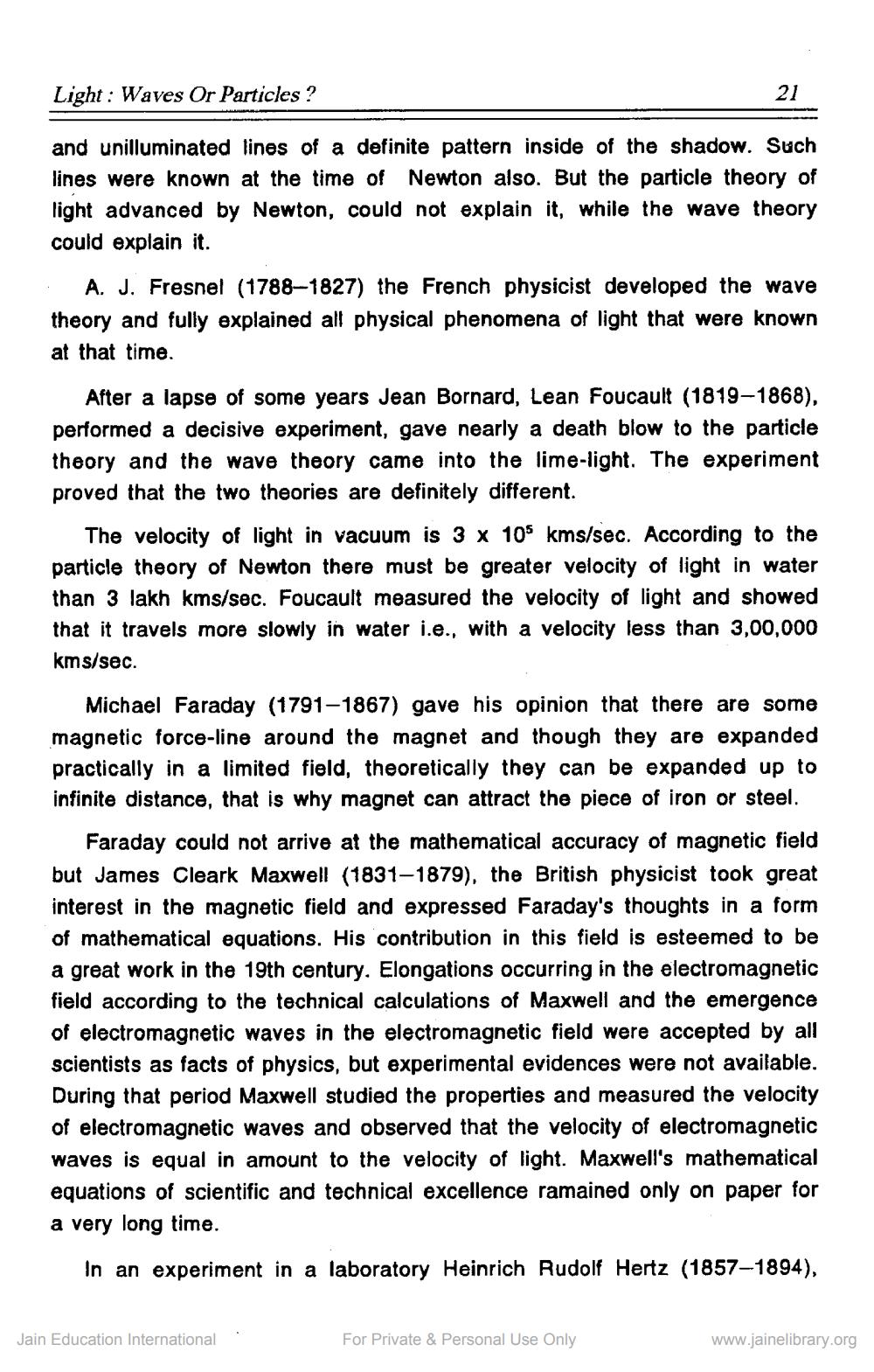________________
Light : Waves Or Particles ?
21
and unilluminated lines of a definite pattern inside of the shadow. Such lines were known at the time of Newton also. But the particle theory of light advanced by Newton, could not explain it, while the wave theory could explain it. · A. J. Fresnel (1788–1827) the French physicist developed the wave theory and fully explained alt physical phenomena of light that were known at that time.
After a lapse of some years Jean Bornard, Lean Foucault (1819-1868), performed a decisive experiment, gave nearly a death blow to the particle theory and the wave theory came into the lime-light. The experiment proved that the two theories are definitely different.
The velocity of light in vacuum is 3 x 105 kms/sec. According to the particle theory of Newton there must be greater velocity of light in water than 3 lakh kms/sec. Foucault measured the velocity of light and showed that it travels more slowly in water i.e., with a velocity less than 3,00,000 kms/sec.
Michael Faraday (1791-1867) gave his opinion that there are some magnetic force-line around the magnet and though they are expanded practically in a limited field, theoretically they can be expanded up to infinite distance, that is why magnet can attract the piece of iron or steel.
Faraday could not arrive at the mathematical accuracy of magnetic field but James Cleark Maxwell (1831-1879), the British physicist took great interest in the magnetic field and expressed Faraday's thoughts in a form of mathematical equations. His contribution in this field is esteemed to be a great work in the 19th century. Elongations occurring in the electromagnetic field according to the technical calculations of Maxwell and the emergence of electromagnetic waves in the electromagnetic field were accepted by all scientists as facts of physics, but experimental evidences were not available. During that period Maxwell studied the properties and measured the velocity of electromagnetic waves and observed that the velocity of electromagnetic waves is equal in amount to the velocity of light. Maxwell's mathematical equations of scientific and technical excellence ramained only on paper for a very long time.
In an experiment in a laboratory Heinrich Rudolf Hertz (1857-1894),
Jain Education International
For Private & Personal Use Only
www.jainelibrary.org




